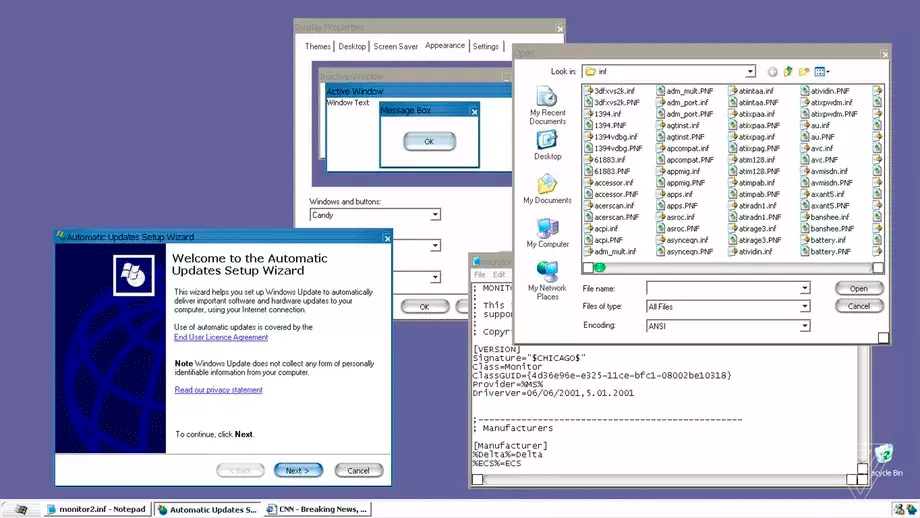
Mac-style secret topic found in Windows XP source
In September, the entire industry was alarmed after news of a source code leak for Windows XP and Windows Server 2003. The news was not fake. The source codes are real, and from them the working versions of both OS were compiled .
Recall that it all started on September 24: on the 4chan portal, unknown people posted a 42.9 GB torrent with the full source code of Windows XP and Windows Server 2003. Although today less than 1% of computers in the world are running XP, and the developer does not provide any support, source code leak still caused a slight euphoria among programmers. After all, for many years we wondered how certain functions or APIs were implemented , and now you can look at the code with your own eyes.
Either way, Microsoft immediately started a war. The very next day, the sources began to be deleted wherever possible.
At the same time, Microsoft launched an internal investigation into the leak. It probably originated through one of the partner companies or government organizations with which Microsoft is forced to share the source code for security audits.
The leak started through 4chan, torrents and the Mega file sharing service. The file from Mega was deleted almost immediately after the copyright holder's complaint.

I had to tinker with torrents. While some torrent trackers do respond to delete requests, sites like The Pirate Bay are happy to index almost everything, including source code leaks. There is little even the mighty Microsoft can do here.
In large aggregators of information, like Google or Twitter, links to the source code were removed almost completely and very quickly, but if you enter a value from a magnet link in the search bar, then it is found in both Google and Twitter (if you want to break the law and download the sources, then advice - only the nt5src.rar file is needed in the torrent ).
This is not a clickable link, but just a hash, a combination of letters and numbers:
3d8b16242b56a3aafb8da7b5fc83ef993ebcf35bIn principle, no one can prohibit this combination of symbols according to the first amendment to the US Constitution on freedom of speech. These symbols can be freely printed on mugs and clothing, either individually or as a whole.
But a few days after the leak, the fun began. On September 29, a developer under the nickname
shaswata56decided that it would be a good idea to put the source code of Windows XP in a repository on Github so that the world can see and download it - for more convenient discussion, bug fixes, and so on. What's interesting here is that Github is owned by Microsoft, so Microsoft actually leaked its own code itself.

Given the severity of the incident, one might assume that Github would instantly detect and delete the repository. But that did not happen. Despite all the publicity, it took Microsoft a full ten days to do something about it. Moreover, she had to send her own company a DMCA notification asking them to remove the code!
“I work for Microsoft Security Incident Response. The code in question is taken from a Windows XP source code leak, says the October 8 DMCA notice to Github. "The content on Github is pulled directly from the torrent (which is also removed)," the document says.
Initially this notice even included the aforementioned hash value from the torrent
7c370b5e00b91b12fc02e97bacdca24306dc12b5, but later Microsoft came to its senses and removed it. However, it was preserved in archival copies of the statement.
Obviously, Microsoft is wrong in claiming that the torrent has been "deleted", since the magnet link is widely distributed on the Internet.
Nevertheless, with a strong desire and intervention from the top management, it would probably be easy to force the subsidiary to do what the management wants - to remove the source code. It would take 5 minutes. One phone call. Instead, it took exactly 10 days - an eternity when it comes to leaks; It's even a little embarrassing that your own site has been leaking for so long, guy.
Considering that magnet links are still available in the Google cache, there is another version. Perhaps Microsoft realizes that all these measures are useless. Maybe she's not too worried or even happy to publish the source. Suddenly, the community will find serious bugs in those parts of the code that still work in Windows 10 and Windows Server 2019 (and there are probably a lot of such parts). And Microsoft will be able to fix these errors.